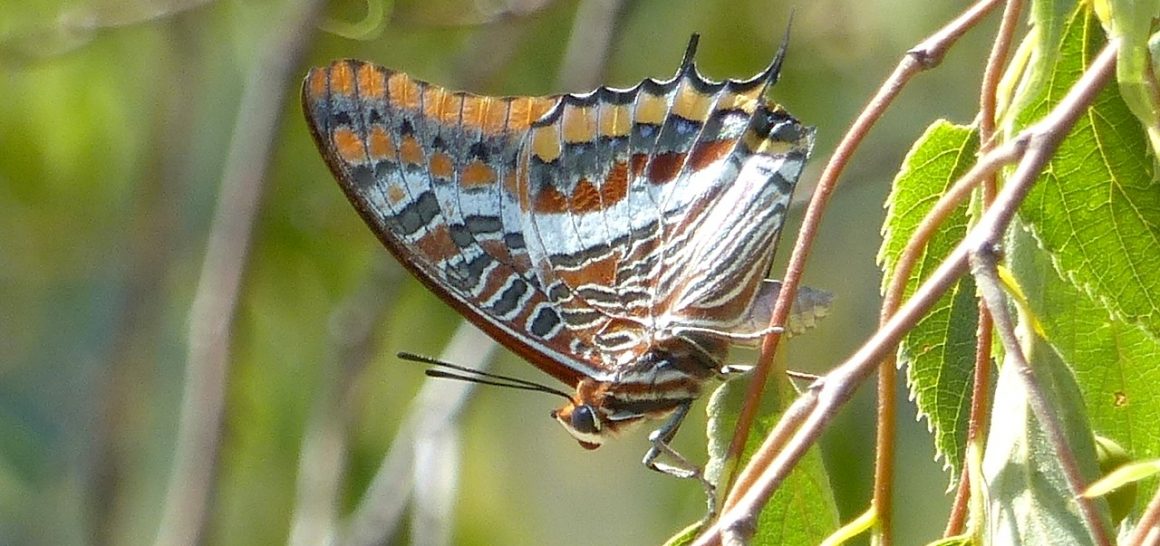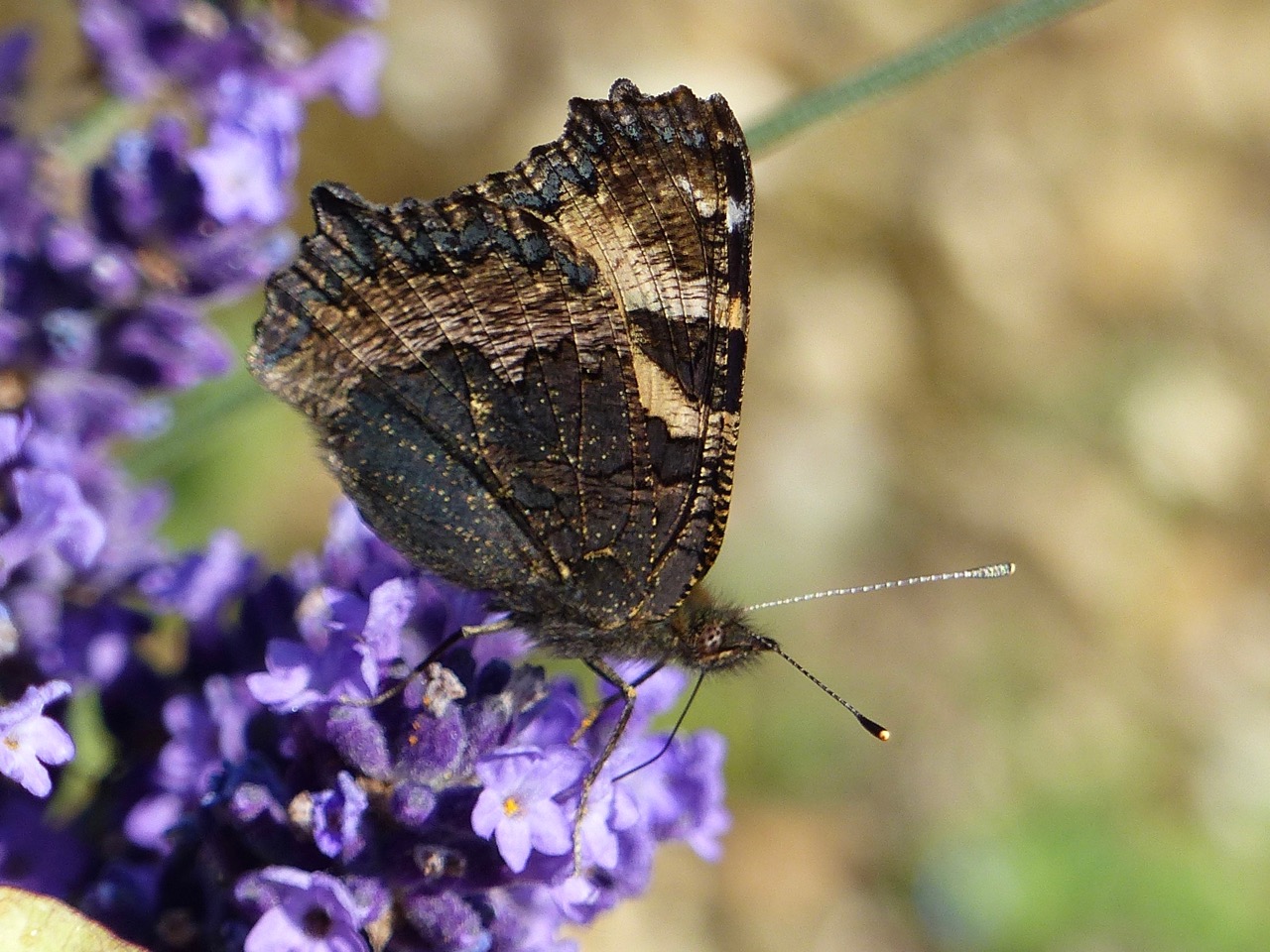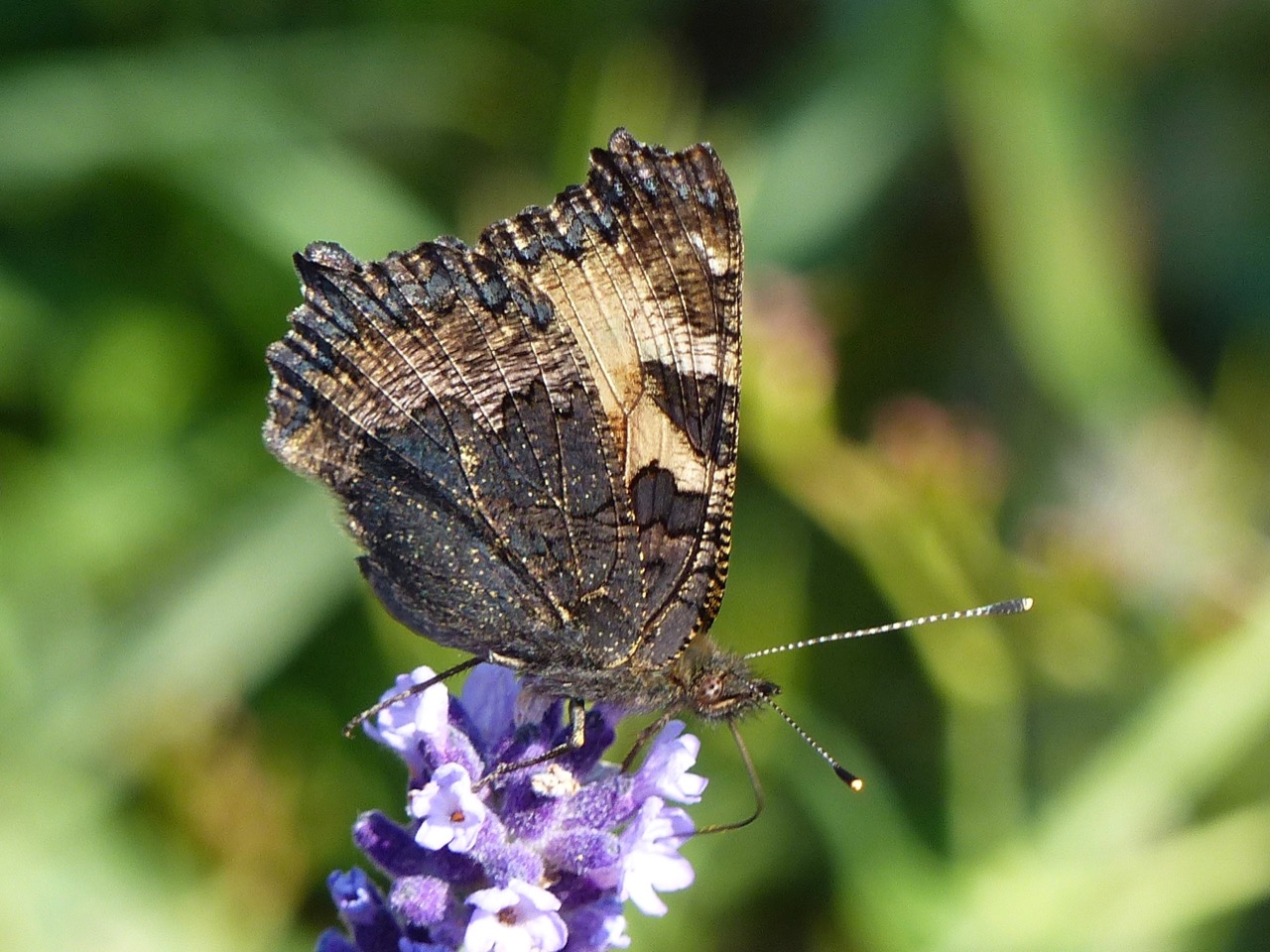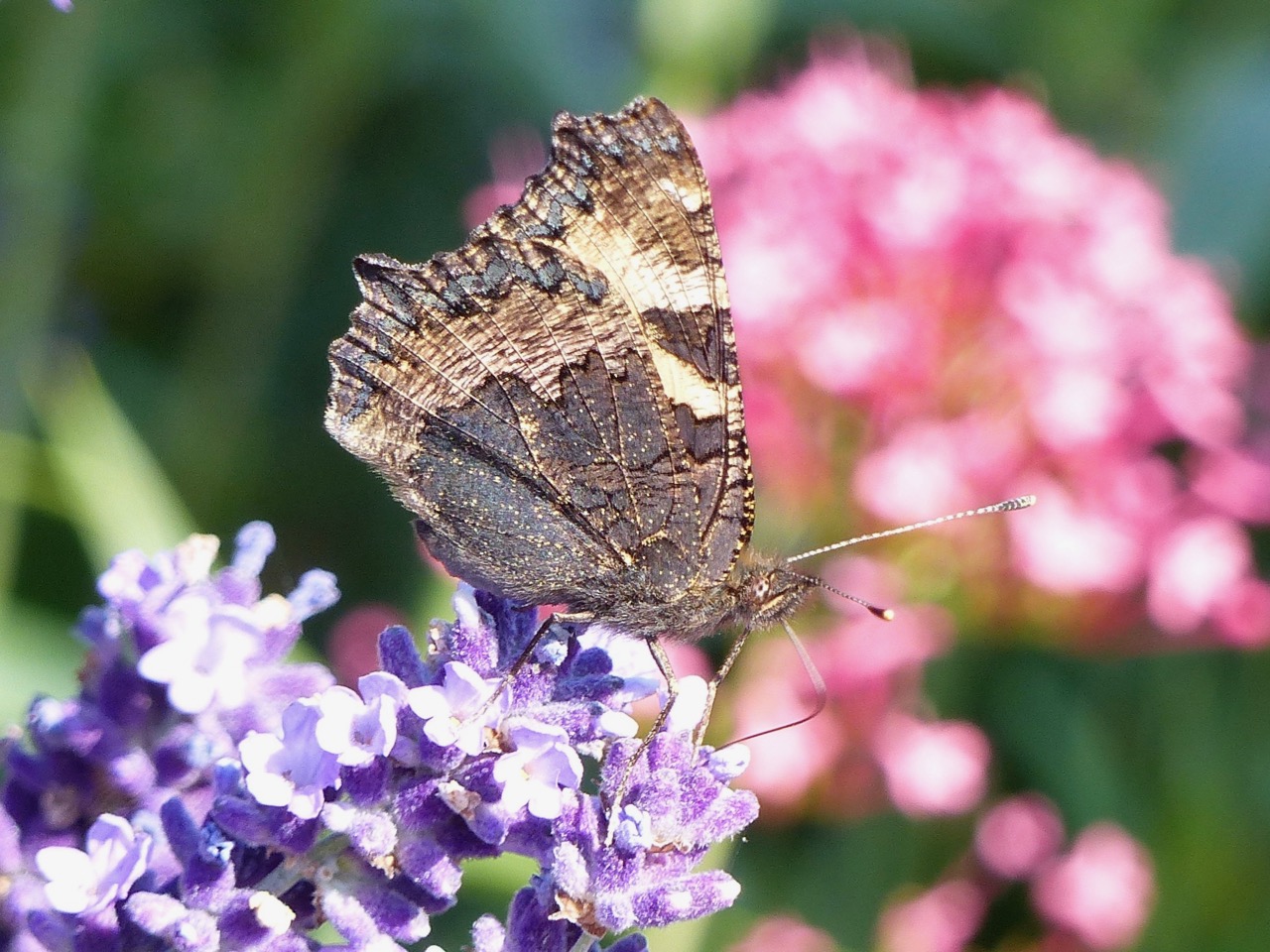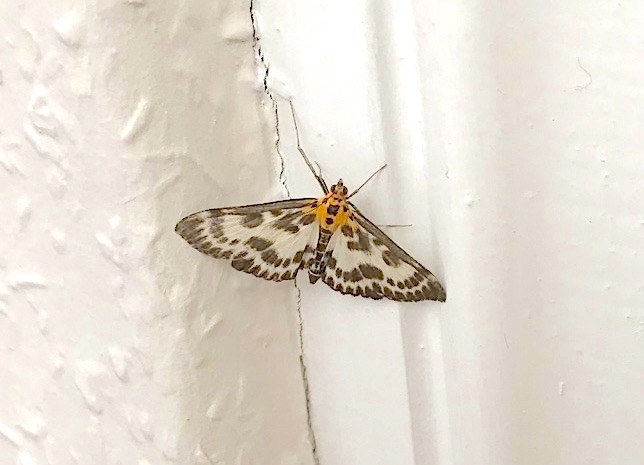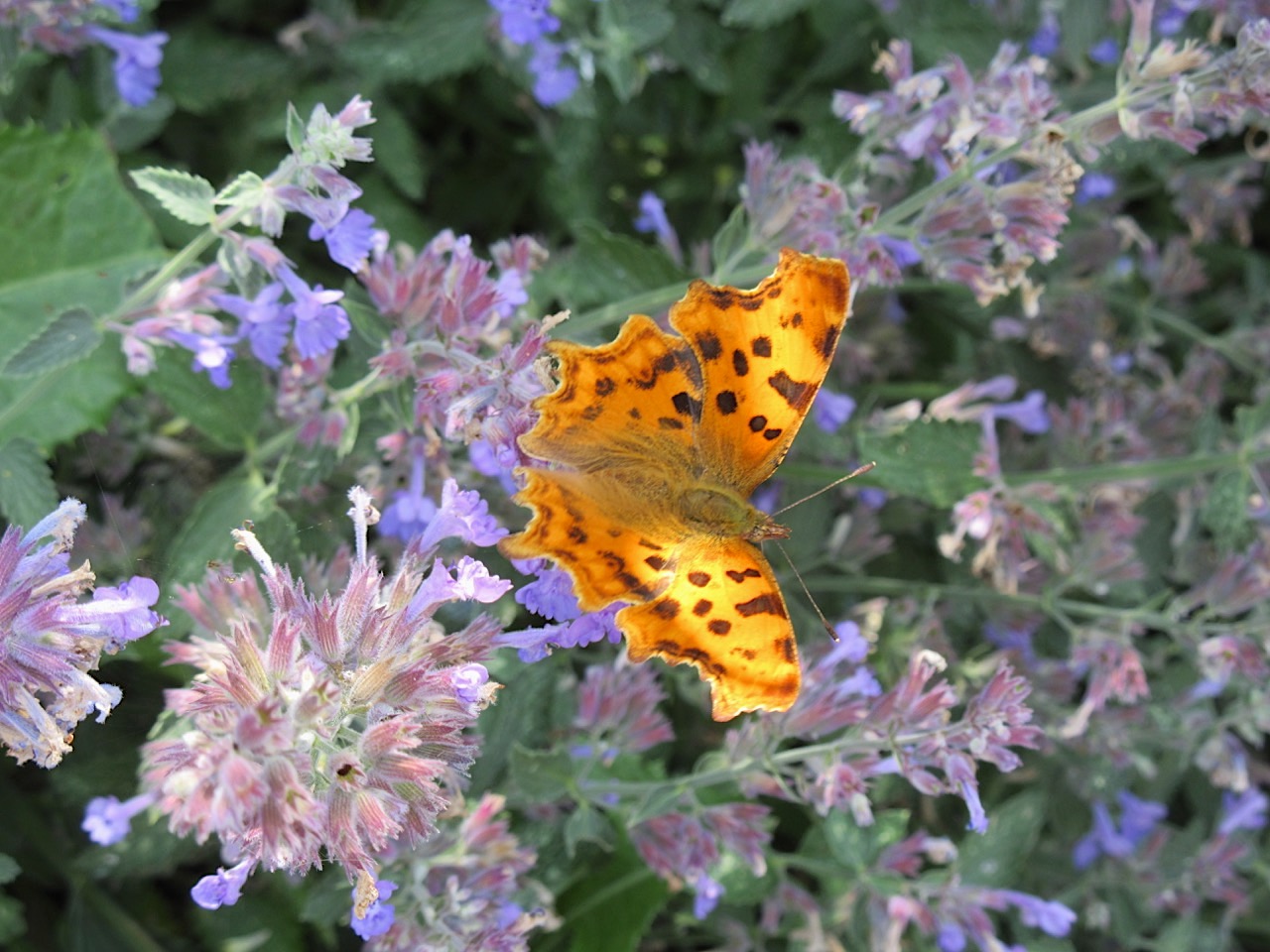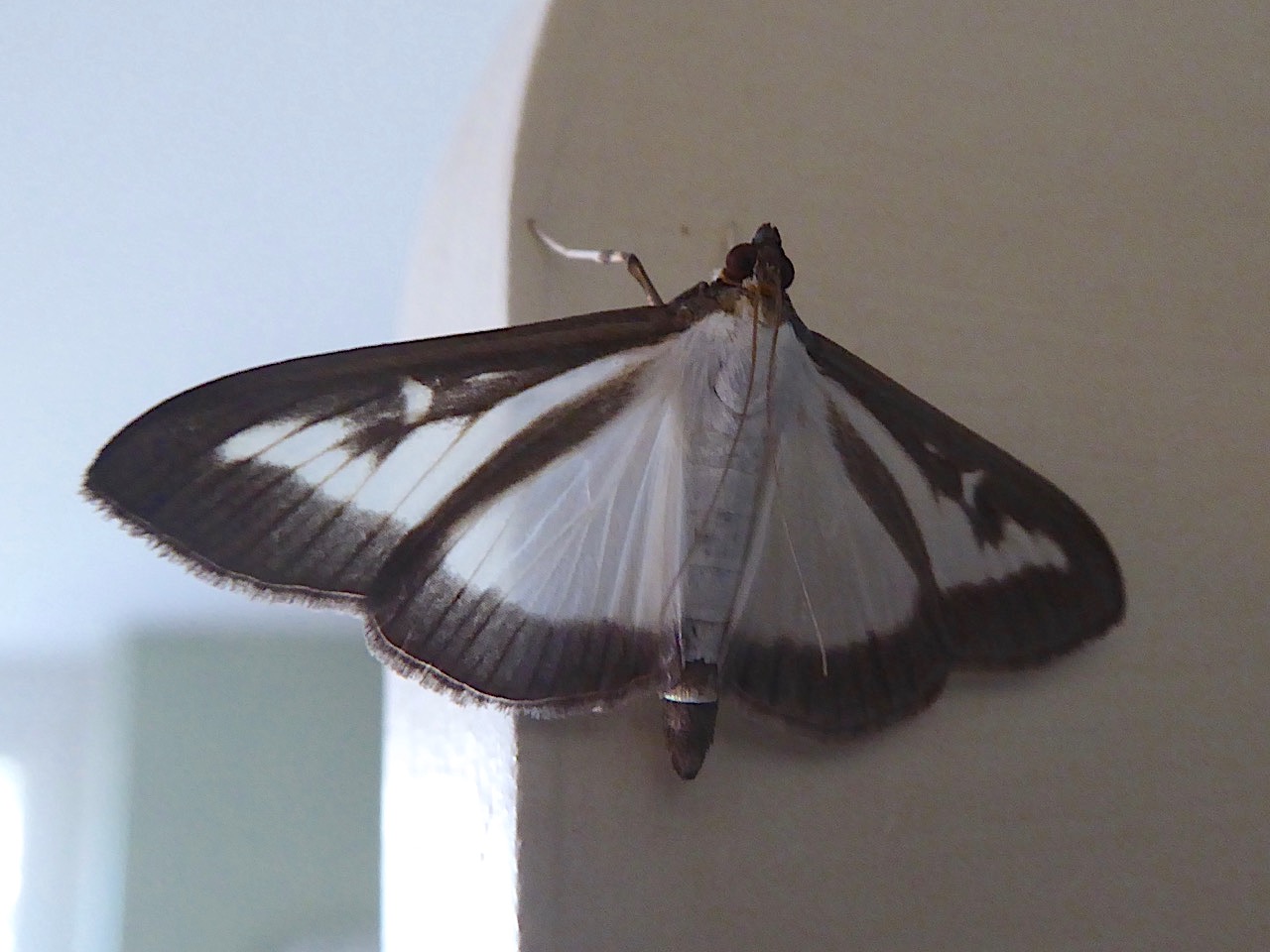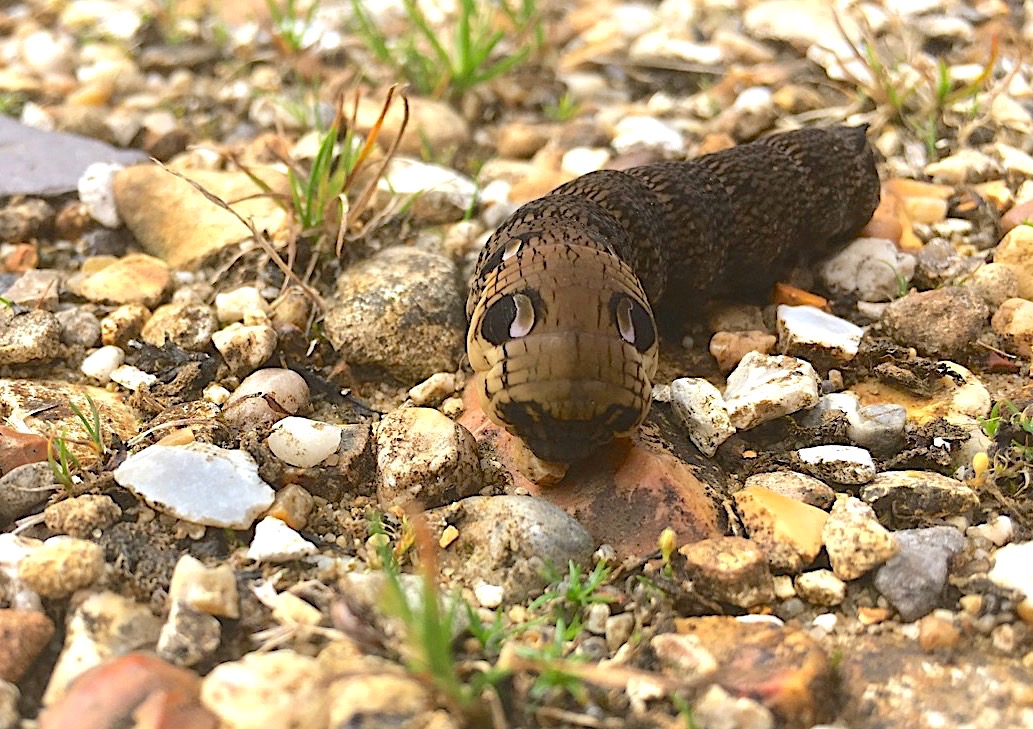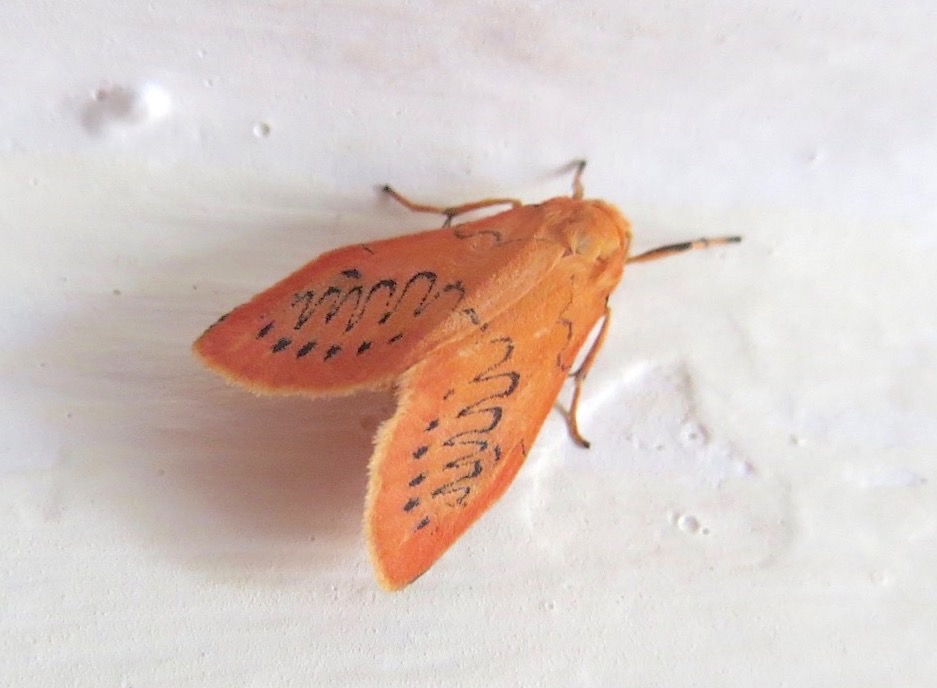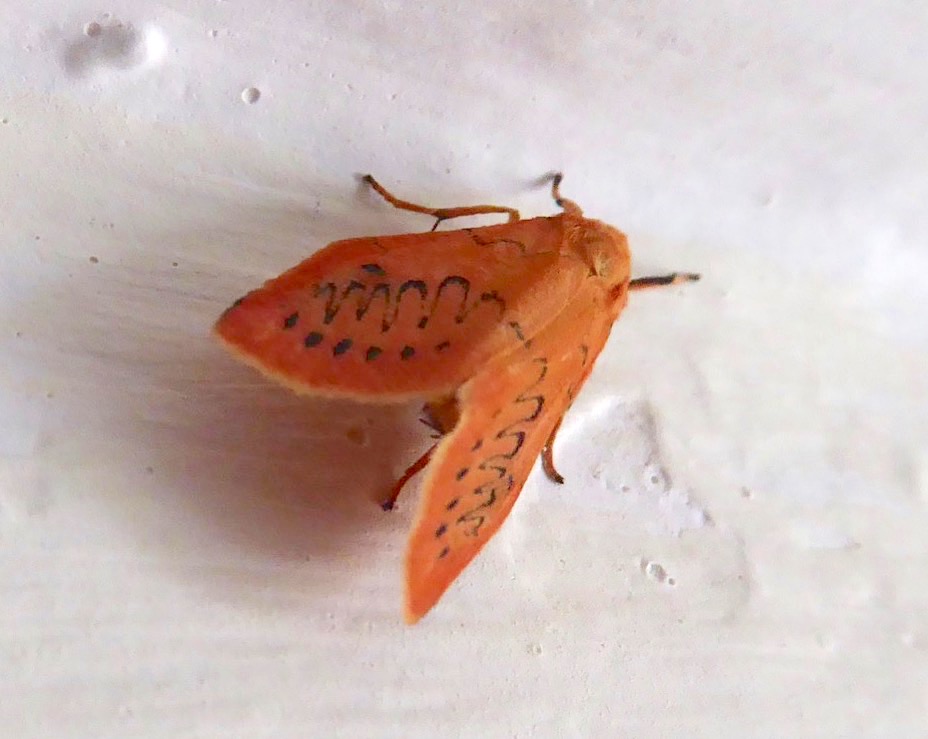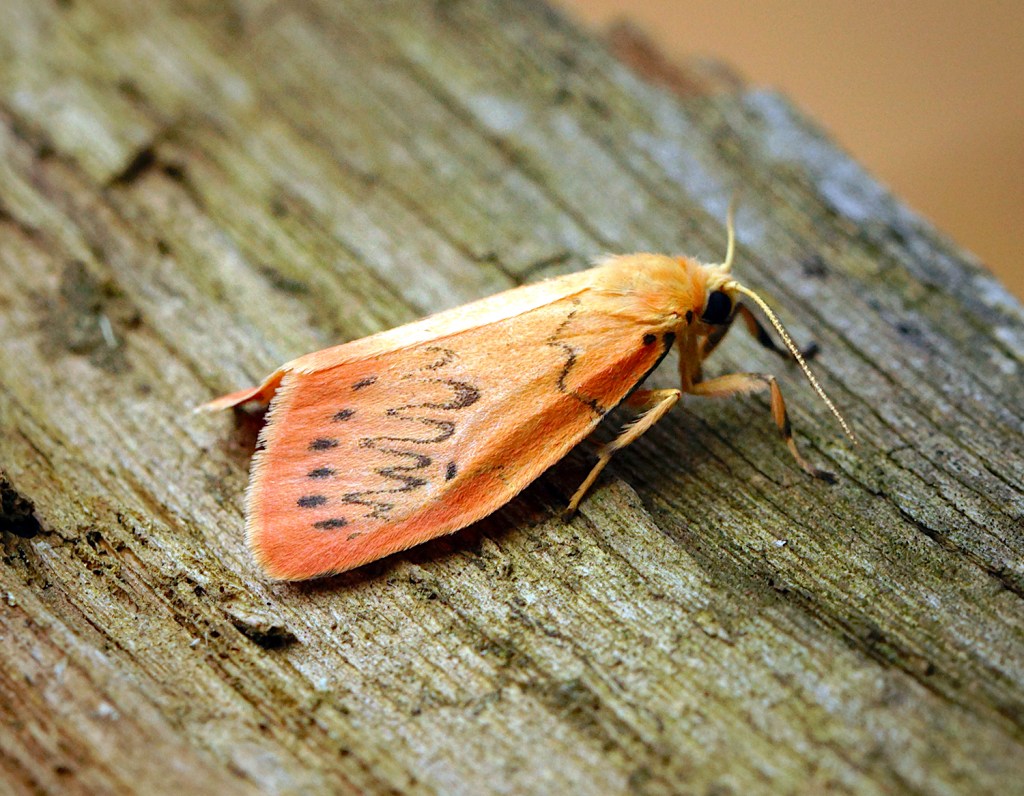
Category: BUTTERFLIES & MOTHS
TORTOISESHELL
DELAYED POST
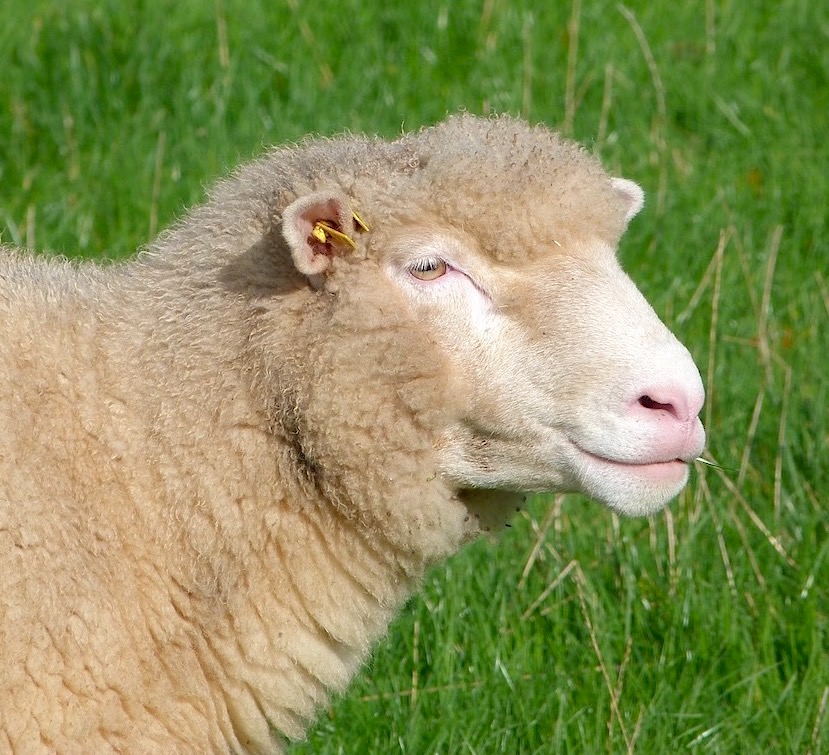
This blog was started in 2012 and was originally intended to be an omnium gatherum of specific and conceivably interesting categories. The menus below mostly had sub-menus. The blog was a spin-off from a more time-consuming effort that took priority.


I never posted very regularly, and I didn’t promote the site. Looking back at my stats, I can’t help noticing that, even by 2015, I was excusing myself for long gaps between posts. I see that 2017 was the last year that I made regular posts. In the last 5 years there have been 30 short posts – none at all for the last 2 years.

It could easily be argued (I do so with myself sometimes) that I should quietly put the blog out of its misery and delete it. However, several thousand people a year visit the site and possibly find something of interest, entertainment – or even the exact thing they are looking for.
So I have decided to leave things as they are, at least for the time being. And thanks to those who have visited, even if only once…
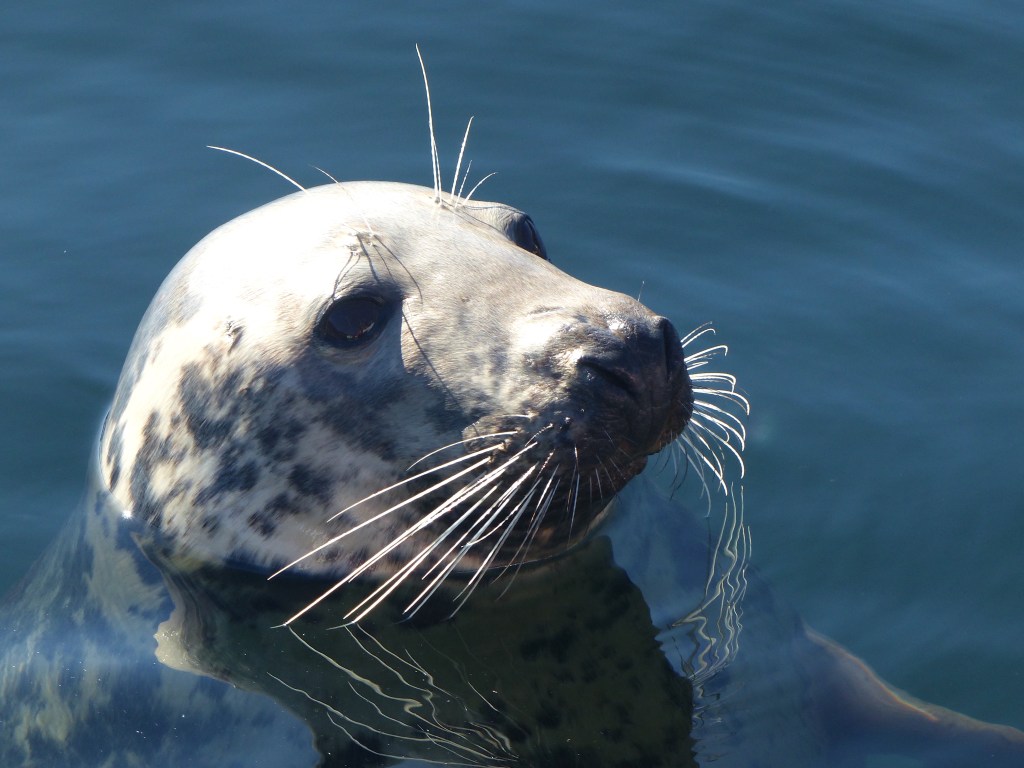
If you are interested in Sundials of all kinds and / or Medieval Churches, there’s a properly working blog HERE
If you have an interest in natural history elsewhere in the world – birds, reef fishes, marine mammals – try HERE
RED ADMIRAL BUTTERFLY STUDIES (WINGS CLOSED)
Red admiral butterflies – God’s gift to amateur photographers, including myself. Colourful, prolific, simple to identify, usually within easy camera reach. All very well, but sometimes they are so busy feeding that the colourful topside is kept hidden. These images from Dorset attempt to show that closed-wing images of feeding red admirals have the interest if not the good cheer factor of the popular view. See what you think…
SMALL MAGPIE MOTH, DORSET
I posted about the MAGPIE MOTH quite a while ago. Now I’ve come across its junior cousin, the small magpie moth. This one was in a hard to photograph corner (especially with an iPhone), and the images are neither good nor varied (it stayed completely still). But it’s another species to add to the list. Unlike the large magpie, the small variety has no yellow band across the wings,
OXFORD COMMAS: GRAMMATICAL LEPIDOPTERA

This is a Comma butterfly that happens to have been photographed in Oxford. There are plenty about right now – I’ve been seeing them in London, coastal Sussex and Dorset. This one in Oxford was enjoying Nepeta (catmint), and providing a lazy excuse to reference the seemingly interminable ‘Oxford Comma’ grammar debate – the question whether, in a list of items, a comma is mandatory before the eventual ‘and’. See below (if you can be bothered in all this hot weather / while the World Cup is on).
“I love my parents, Jesus Christ and Lady Gaga”. Does this make any kind of sense? No. Exactly. You are not the progeny of Christ and a self-enobled and cannily bonkers popular singer. You need a comma before the ‘and’ for the sentence to make sense. Only then are you clearly loving each of those specified independently. I rest my case.
BOX TREE MOTH: SEEK AND DESTROY…
BOX TREE MOTH: SEEK AND DESTROY…
Here’s a moth species new to me, that I couldn’t locate on any UK Moth ID site. Then I found out why. The Box Tree Moth Cydalima perspectalis is native to East Asia. It’s an introduced species to Europe, first recorded as recently as 2006 in Germany; 2008 in UK; and nearly everywhere else since. It thrives on Box Buxus colchica, and to an extent the species may have spread with exports of the bush. And it’s plainly a busy reproducer… and now it’s here, it’s probably a stayer.
A few days ago we had one in the kitchen (bonus points for recognising the cookery book it chose to land on). I took some quick photos for ID, failed to find a match online, and resorted to the excellent Moths UK FB page, where mothmaticians quickly respond to images uploaded for ID. I later found out that one of our sons has had two infestations this summer, resulting in total loss of two small rows of box.
The moth lays its eggs on the undersides of Box leaves. The caterpillars feed so rapaciously on the leaves and shoots that they may simply destroy the entire plant. And there are two or three generations gorging each season. Furthermore, there are no natural predators (such as the Asian wasps that target the larvae in their native lands). Maybe in time that will change, with birds and other predator species learning a taste for the things.
There’s also a quite different brown morph / colour variant of the Box Tree Moth to contend with, which I imagine is just as effective in destroying the host plant.
There are apparently various methods of dealing with the problem, mainly involving chemicals, bacteria, nematodes, and pheremone traps. All seem to require intensive repeat applications. Some of these solutions may presumably have an adverse effect on other wildlife.
As far as ‘mistake’ species are concerned, the ones that have accidentally (or through escape or deliberate release) colonised places far from where they belong, I reckon a case-by-case approach is needed. Harmless to humans, other life-forms, ecology and the environment? Bring them on. Harmful in any of those respects, parasitic, fast-spreading, predator-proof, potentially ineradicable? Expunge them ruthlessly.
I take one of these views about the Box Tree Moth. Look out for the eggs, the caterpillars, the imagos. Report them. Or DIY. A box bush might be a good place to start.
Top 3 photos from the kitchen; the others thanks to Wiki. There’s a mass of stuff on these critters and their little ways online if you want to find out more. Not trying to be controversial here, btw, but I’d be surprised if you can’t name half a dozen species of animal, bird and plant that are invasive to the UK / Europe, damaging to the new host territory – and would be best eradicated.
ELEPHANT HAWK-MOTH CATERPILLAR IN DORSET
This fearsome creature was within an inch of being crushed by my heedless foot… but luckily it made a surprisingly agile lurch to one side just in time. I had no idea what it was, other than the largest caterpillar I have ever come across. Everyone else will know, of course, that it is the childhood form of what will become an elephant hawk-moth Deilephila elpenor. I haven’t knowingly seen one of those either.
NOTE Aug 2023. This post from 2017 on this largely defunct site was has attracted a lot of hits this month. It gives an excellent example of APOSEMATISM, defensive appearance and / or behaviour designed to repel predators. The Wiki link above will take you to a very good article on this topic, and is highly recommended if you want to know how animals of all kinds have developed many and varied protective methods
These caterpillars have three ‘poses’. The first is the usual day-to-day one, as it goes about its business with its little snout – or ‘trunk’ – extended. Note the four prominent ‘eye’ markings behind the head.
At the threat of danger, the caterpillar assumes its ‘elephant’ pose, tucking away its snout and humping its front end so that the 4 ‘eyes’ glare intimidatingly. From the front, there is the hint of a mouth, with two sharp eyes above it.
From above, the creature looks like a formidable, probably toxic adversary, to be given a wide berth.
The third pose is a so-called snake pose, whereby the caterpillar curves its body, and, as I found, continues to do so back and forth accompanied by alarmingly quick ‘head’ movements, as if squirming menacingly. I backed away, before bravely putting it on a laurel leaf to move into better light in order to inspect it further. At the back, there’s a backward-facing hook or spike – in common with most hawk-moth species I think.
Had I wanted to straighten it out, the caterpillar would have been over 2 inches long. Quite wide, too. All-in-all an impressive beast.
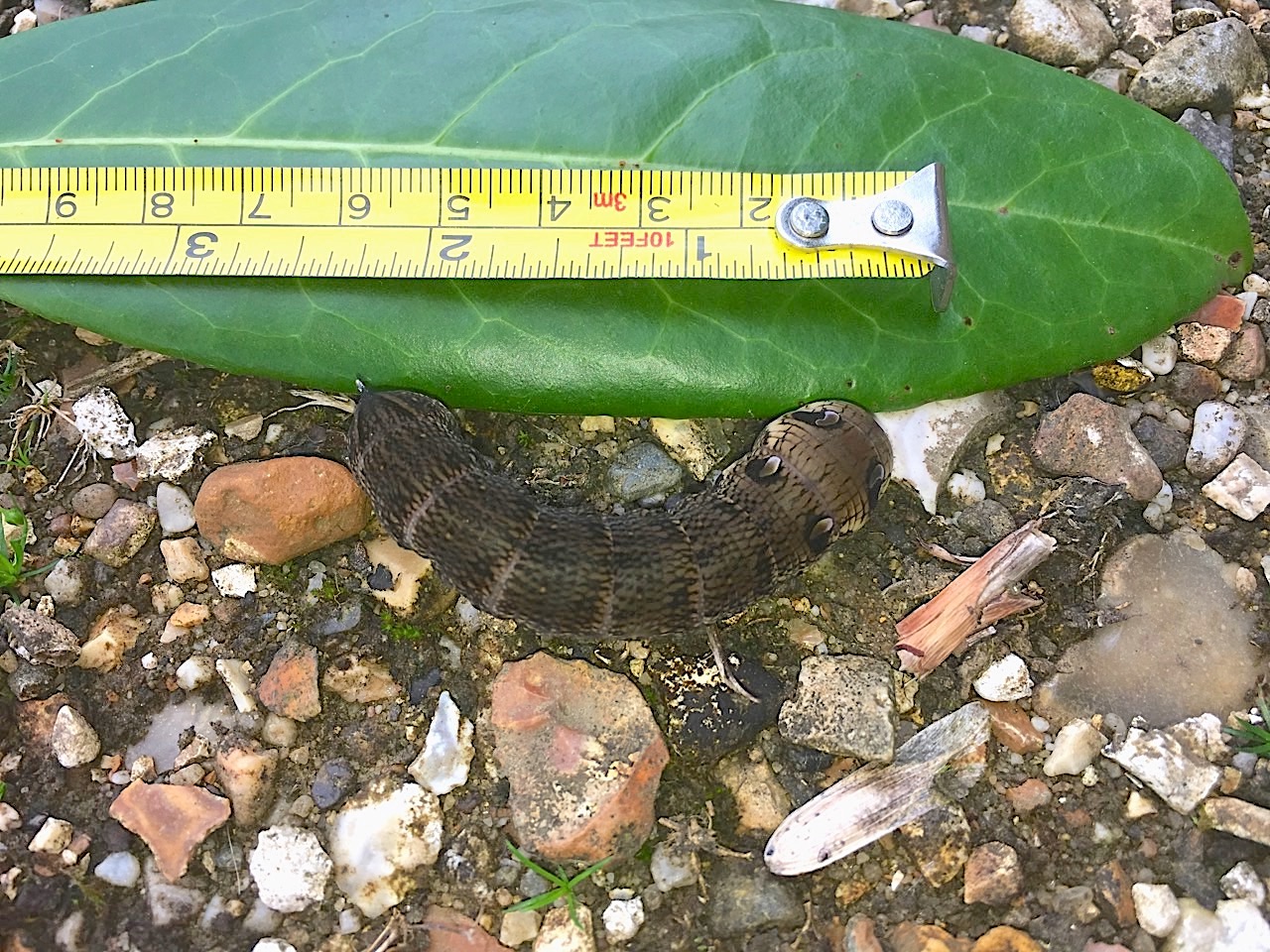
ROSY FOOTMAN: A MOTH, NOT A FLORID FLUNKEY
Until last weekend I’d never heard of, let alone seen, a ROSY FOOTMAN. I’m beginning to discover and enjoy the ornate to downright bizarre names that moths tend to be given. They have this in common with fly-fishing flies – the previous day I had caught a plump wild brown trout on the River Frome with a ‘Tups Indispensable’*.
High on an inside wall above a mirror, I saw a small pink item. On closer inspection, I could tell it was a moth, and one I had never seen before. I had to fetch a small stepladder to inspect it and (with some difficulty) to photograph it, . Meet a Rosy Footman.
The Rosy Footman is apparently a moth of southern England, in particular the southern-most counties from Kent to Cornwall. They fly in July and August. With such very particular markings, they are unmistakeable, but clearly I’d failed to notice one ever before… I’m glad I have now.
* For those concerned about these things, I use barbless hooks. I netted the fish, unhooked it still in the water and released it in about 30 seconds to fight another day. Or preferably to produce more wild stock.
PALE TUSSOCK MOTH, DORSET
Until a few days ago, I’m not sure I’d ever before seen a pale tussock moth Calliteara pudibunda that was on a wall inside our house. I took it outside and put it gently onto an old garden bench. 10 minutes later it was gone. As is so often the case I only had an iPhone with me at the time, so the photo above is a bit rough and ready. On the other hand, you get a good idea of the subtle and pretty colouring and marking of this moth – and as you see, it was intriguingly furry, with spotted legs.

I flicked through a couple of slightly basic butterfly / moth books we have, but could find nothing like this creature. So I checked out the FB page of UK MOTHS to find a match. Sure enough, others had queried the ID of this species so I discovered the name easily enough. I don’t think it is particularly rare. There were also plenty of other fascinating and indeed extraordinary-looking moths that are apparently quite common in the UK. A FB page that’s well worth taking a look at.
The pale tussock is a moth of spring / early summer, and its appearance seems to be distinctive enough to avoid confusion with other moth species. The other feature, only deployed once I’d got it outside the house, are its feathery antennae (below).
To make up for my rather poor photos, here is a really good one to make up for it, showing a pale tussock in all its glory…
